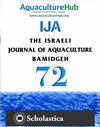Transcriptome analysis reveals the molecular basis of the response to acute hypoxic stress in blood clam Scapharca broughtonii
IF 0.5
4区 农林科学
Q4 FISHERIES
引用次数: 0
Abstract
Hypoxia tolerance and adaptive regulation are important for aquatic animals, especially for species with poor mobility, such as most bivalves. Previous studies have confirmed that the blood clam Scapharca broughtonii has strong hypoxia resistance. However, the molecular mechanism supporting its hypoxic tolerance is still largely limited. To further screen the genes and their potential regulation of hypoxia tolerance, the transcriptome changes of S. broughtonii after acute hypoxic stress were explored by RNA sequencing. In this study, the average value of Q30 is 92.89%, indicating that the quality of sequencing is relatively high. The Unigenes obtained were annotated using four databases, namely Interpo, KEGG, Swisspro and TrEMBL. The annotation rates in these four databases were 71.82%, 75.95%, 92.98%, and 79.26%, respectively. And also, there were 649 DEGs in group B (dissolved oxygen (DO) of 2.5 mg/L) compared with group D (DO of 7.5 mg/L), among which 252 were up-regulated, and 397 were down-regulated. There were 965 DEGs in group A (DO of 0.5 mg/L), 2.5 mg/L, and 7.5 mg/L, compared with group B, among which 530 were up-regulated, and 435 were down-regulated. Meanwhile, there were 2,040 DEGs in group A compared with group D, among which 901 were up-regulated, and 1,139 were down-regulated. The main metabolic-related pathways of KEGG enriched in this study included Insulin secretion, Insulin signaling pathway, MAPK signal transduction pathway, and PPAR signaling pathway. These pathways may be critical metabolic pathways to solve energy demand and rebuild energy balance in S. broughtonii under hypoxic conditions. This study preliminarily clarified the response of S. broughtonii to hypoxia stress on the molecular levels, providing a reference for the following study on the response laws of related genes and pathways under environmental stress of S. broughtonii.转录组分析揭示了血蛤对急性缺氧应激反应的分子基础
低氧耐受性和适应性调节对水生动物很重要,特别是对流动性差的物种,如大多数双壳类动物。以往的研究证实,血蛤具有较强的抗缺氧能力。然而,支持其耐缺氧的分子机制在很大程度上仍然有限。为了进一步筛选耐缺氧基因及其潜在的调控作用,我们利用RNA测序技术研究了急性缺氧应激后布氏梭菌的转录组变化。在本研究中,Q30的平均值为92.89%,说明测序质量较高。利用Interpo、KEGG、Swisspro和TrEMBL四个数据库对获得的Unigenes进行注释。4个数据库的注释率分别为71.82%、75.95%、92.98%和79.26%。B组(溶解氧(DO)为2.5 mg/L)与D组(DO为7.5 mg/L)相比有649个deg,其中上调252个,下调397个。与B组相比,A组(DO为0.5 mg/L)、2.5 mg/L和7.5 mg/L分别有965个deg,其中上调530个,下调435个。与D组相比,A组共有2040个deg,其中上调901个,下调1139个。本研究富集的KEGG代谢相关通路主要包括胰岛素分泌、胰岛素信号通路、MAPK信号转导通路和PPAR信号通路。这些途径可能是在缺氧条件下解决能量需求和重建能量平衡的关键代谢途径。本研究在分子水平上初步阐明了布氏单胞菌对低氧胁迫的响应,为后续研究布氏单胞菌在环境胁迫下相关基因和通路的响应规律提供参考。
本文章由计算机程序翻译,如有差异,请以英文原文为准。
求助全文
约1分钟内获得全文
求助全文
来源期刊
CiteScore
0.90
自引率
16.70%
发文量
49
审稿时长
3 months
期刊介绍:
Information not localized

 求助内容:
求助内容: 应助结果提醒方式:
应助结果提醒方式:


